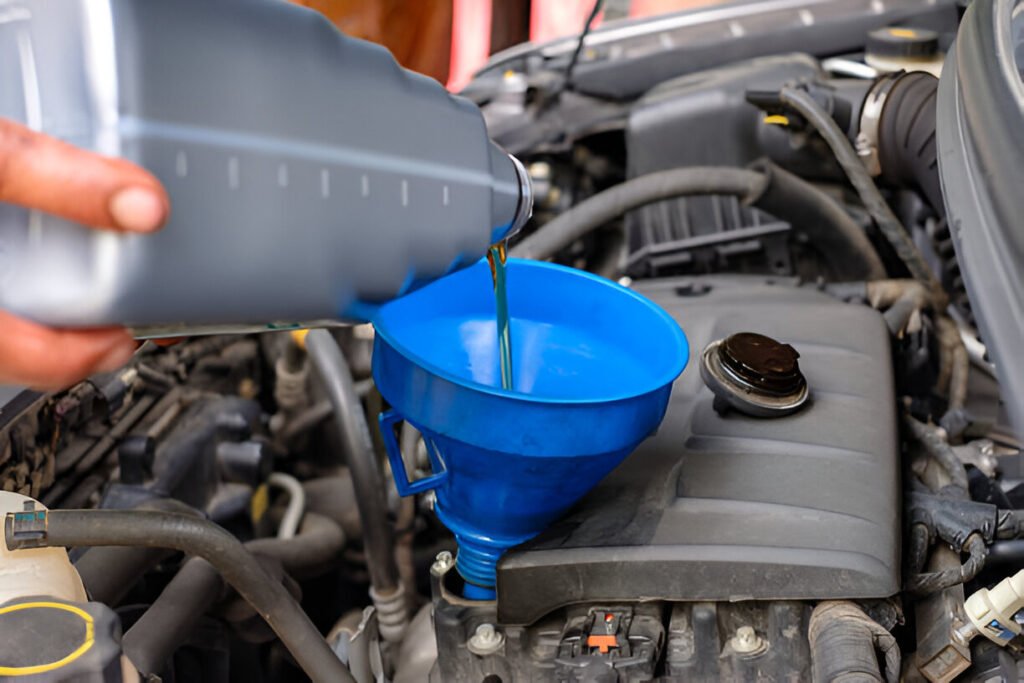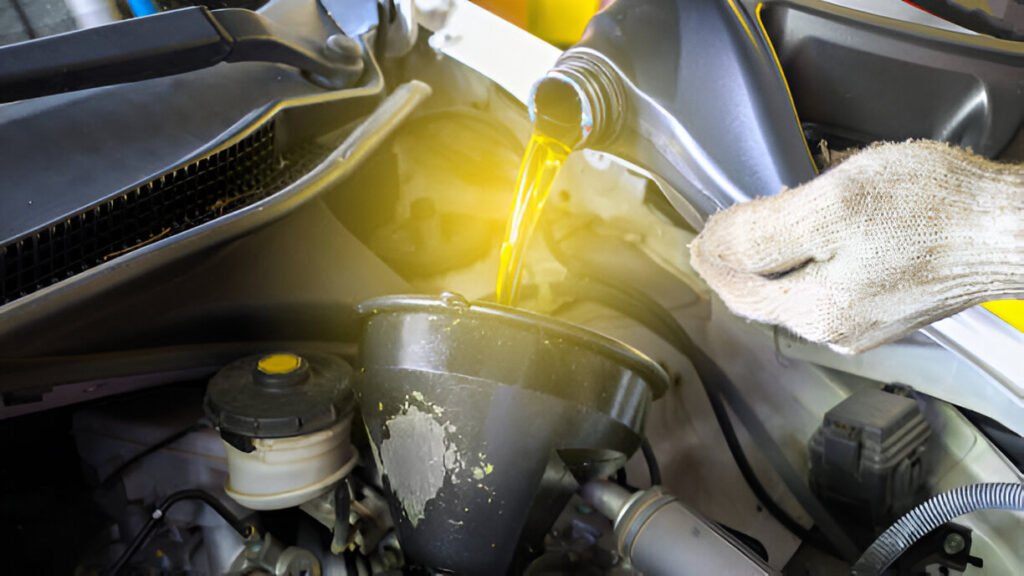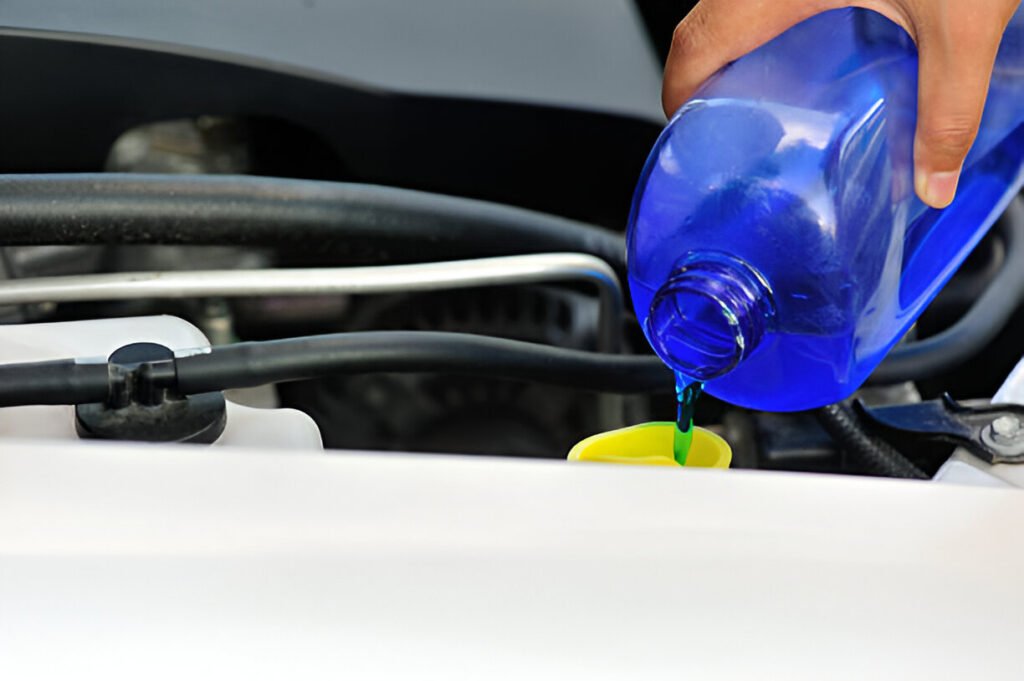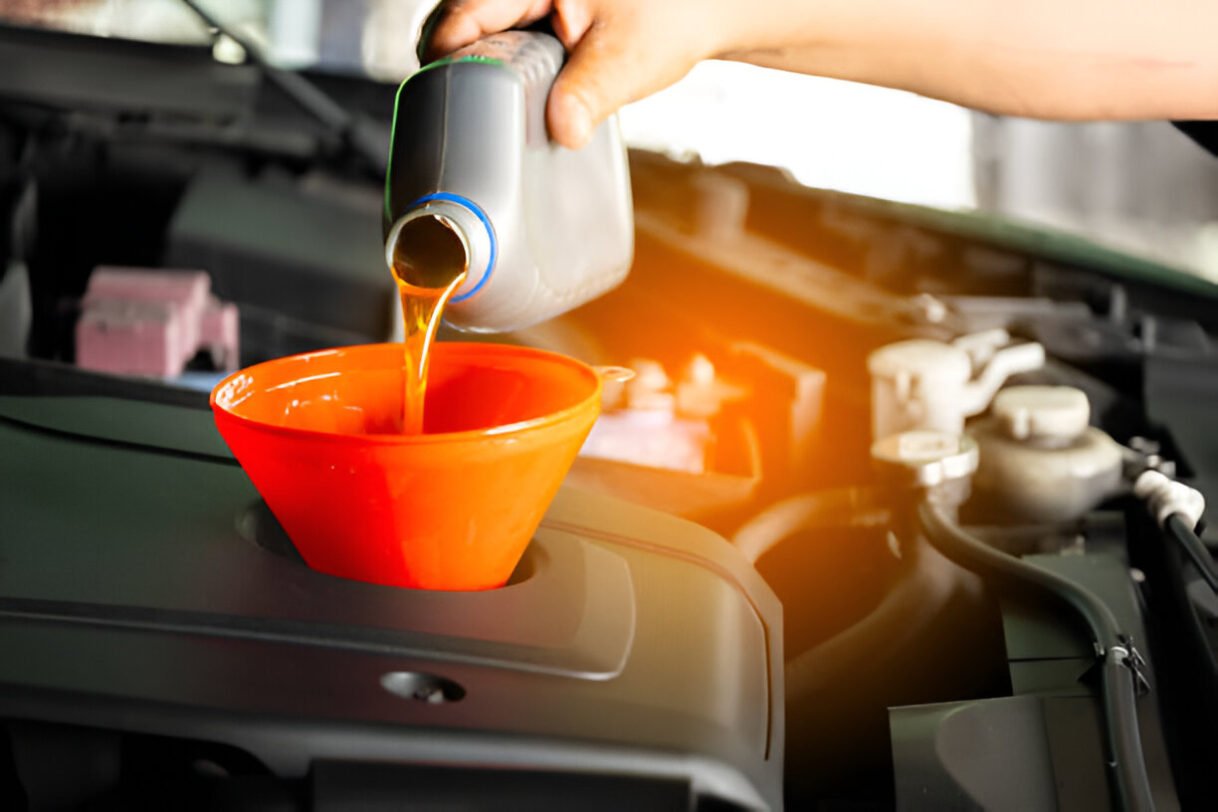In the world of hybrid and fuel-powered vehicles, engine oil plays a crucial role in lubricating the internal parts of the engine to reduce friction between them. On the other hand, coolant (also known as antifreeze) protects the combustion engine from damage caused by freezing or overheating. There are several reasons why engine oil might mix with coolant, and when this happens, it can cause significant damage to your car’s engine. No one wants to face this nightmare, as engine repairs can be extremely costly and beyond the means of many people. In this article, we’ll take an in-depth look at the main causes of oil mixing with water in cars so that you can be well-informed about this critical issue.
Understanding the Importance of Keeping Oil and Coolant Separate

Before we dive into the causes and signs of oil and coolant mixing, it’s essential to understand why these two fluids should never mix in the first place. Engine oil and coolant have distinct roles in your vehicle:
- Engine Oil: Lubricates moving parts, reduces friction, and helps dissipate heat from the engine.
- Coolant: Regulates engine temperature, prevents freezing in cold weather, and protects against corrosion.
When these fluids mix, they can’t perform their intended functions effectively, leading to severe engine damage if not addressed promptly.
Top Causes of Oil Mixing with Water in Cars

Let’s explore the main reasons why oil might mix with coolant (often referred to as water or radiator water) in your car’s engine:
1. Blown Head Gasket
A blown head gasket is one of the most common causes of oil and coolant mixing. The head gasket is a critical component that seals the joint between the engine block and cylinder head. When it fails, it can allow oil and coolant to mix.
Symptoms of a blown head gasket include:
- White smoke from the exhaust
- Overheating engine
- Loss of engine power
- Milky oil on the dipstick
- Bubbles in the radiator or overflow tank
Why it happens:
- Overheating
- Age and wear
- Improper installation
- Manufacturing defects
Prevention:
- Regular maintenance
- Addressing overheating issues promptly
- Using the correct coolant
- Following proper torque specifications during installation
2. Cracked Engine Block
A cracked engine block is a severe issue that can lead to oil and coolant mixing. This problem is often caused by severe overheating or freezing.
Signs of a cracked engine block:
- Visible external cracks
- Coolant leaks
- White smoke from the exhaust
- Poor engine performance
- Oil in the coolant or vice versa
Causes of engine block cracks:
- Severe overheating
- Freezing of coolant
- Physical damage (e.g., accidents)
- Manufacturing defects
Prevention:
- Maintain proper coolant levels and mixture
- Address overheating issues immediately
- Use antifreeze in cold climates
- Regular engine inspections
3. Damaged Cylinder Head
A damaged cylinder head can also cause oil and coolant to mix. This component can crack due to overheating or other forms of stress.
Symptoms of a damaged cylinder head:
- Loss of engine power
- Increased oil consumption
- White smoke from the exhaust
- Coolant loss without visible leaks
Causes of cylinder head damage:
- Overheating
- Pre-ignition or detonation
- Manufacturing defects
- Improper maintenance
Prevention:
- Regular cooling system maintenance
- Prompt attention to overheating issues
- Using the correct grade of fuel
- Following manufacturer-recommended service intervals
4. Faulty Oil Cooler
Read also :Common Causes of Car Vibration While Idling: A Comprehensive Guide
Many vehicles are equipped with an oil cooler to help regulate oil temperature. If this component fails, it can allow oil and coolant to mix.
Signs of a faulty oil cooler:
- Milky oil on the dipstick
- Coolant loss
- Engine overheating
- Oil in the coolant reservoir
Causes of oil cooler failure:
- Corrosion
- Physical damage
- Manufacturing defects
- Extreme temperature fluctuations
Prevention:
- Regular inspections of the cooling system
- Using the correct coolant
- Addressing any leaks promptly
- Following manufacturer maintenance schedules
5. Damaged Intake Manifold Gasket
In some engine designs, the intake manifold gasket can be a point of failure that leads to oil and coolant mixing.
Symptoms of a damaged intake manifold gasket:
- Coolant leaks
- White smoke from the exhaust
- Poor engine performance
- Milky substance under the oil cap
Causes of intake manifold gasket failure:
- Age and wear
- Improper installation
- Overheating
- Engine vibration
Prevention:
- Regular engine inspections
- Proper torque during installation
- Addressing overheating issues promptly
- Following manufacturer maintenance guidelines
6. Worn Piston Rings
While less common, worn piston rings can sometimes lead to oil entering the combustion chamber and mixing with coolant.
Signs of worn piston rings:
- Excessive oil consumption
- Blue smoke from the exhaust
- Loss of engine power
- Fouled spark plugs
Causes of piston ring wear:
- High mileage
- Poor oil quality or infrequent oil changes
- Overheating
- Manufacturing defects
Prevention:
- Regular oil changes with the correct grade of oil
- Addressing oil consumption issues promptly
- Following manufacturer-recommended maintenance schedules
- Avoiding prolonged periods of high-speed driving or heavy loads
Read also :Car Fires in Summer: Causes, Solutions, and Tips
Signs of Oil and Water Mixing in Your Car’s Engine

Knowing the signs of oil and coolant mixing is crucial for early detection and prevention of severe engine damage. Here are the key indicators to watch out for:
1. Milky Oil Appearance
One of the most obvious signs of oil and coolant mixing is a milky or creamy appearance of the engine oil. This can be observed on the dipstick or under the oil filler cap.
What to look for:
- Light brown or milky color instead of clear or dark oil
- Frothy or foamy texture
- Visible separation of oil and coolant
What it means: This milky appearance is the result of water emulsifying with the oil, creating a substance often referred to as “milkshake oil.” This mixture cannot properly lubricate engine components and can lead to accelerated wear and potential engine failure.
2. White Exhaust Smoke
When coolant enters the combustion chamber and burns along with the fuel, it produces distinctive white exhaust smoke.
Characteristics of coolant-related white smoke:
- Thicker and more persistent than normal exhaust vapor
- Sweet smell (due to the antifreeze content)
- More noticeable during engine warm-up or acceleration
What it indicates: White exhaust smoke is a strong indicator of coolant entering the combustion chamber, likely due to a head gasket failure or a cracked cylinder head.
3. Coolant Loss Without Visible Leaks
If you notice that your coolant level is consistently dropping but can’t find any external leaks, it could be a sign that coolant is entering the engine oil.
What to observe:
- Frequent need to top up coolant
- No visible puddles or drips under the vehicle
- No visible leaks in the radiator, hoses, or coolant reservoir
Potential causes: This symptom often points to internal leaks, such as a blown head gasket or a cracked engine block.
4. Engine Overheating
When oil and coolant mix, neither fluid can perform its intended function effectively, often leading to engine overheating.
Signs of engine overheating:
- Temperature gauge reading higher than normal
- Steam coming from under the hood
- Engine power loss
- Unusual smells from the engine bay
Why it happens: Coolant contaminated with oil loses its heat transfer properties, while oil diluted with coolant can’t properly lubricate engine components, leading to increased friction and heat.
5. Poor Engine Performance
Oil and coolant mixing can significantly impact engine performance in various ways.
Performance issues to watch for:
- Reduced power output
- Rough idling
- Misfires or hesitation during acceleration
- Increased fuel consumption
Underlying causes: These performance issues arise from improper lubrication, cooling, and potential damage to engine components due to the oil-coolant mixture.
6. Visible Oil in Coolant Reservoir
Sometimes, you may notice oil floating on top of the coolant in the overflow reservoir or radiator.
What to look for:
- Oil slick or film on the coolant surface
- Discoloration of coolant (may appear brown or cloudy)
- Frothy or bubbly appearance in the coolant
What it means: This is a clear indication of a breach between the oil and cooling systems, often due to a head gasket failure or cracked engine block.
7. Unusual Engine Noises
When oil and coolant mix, the resulting fluid doesn’t provide proper lubrication, which can lead to increased engine noise.
Types of noises to listen for:
- Knocking or ticking sounds
- Increased overall engine noise
- Rattling or clunking, especially during acceleration
Potential consequences: These noises often indicate that engine components are not being properly lubricated, which can lead to rapid wear and potential engine failure if not addressed promptly.
The Dangers of Ignoring Oil and Coolant Mixing

Understanding the potential consequences of allowing oil and coolant to mix can help emphasize the importance of addressing this issue promptly:
1. Engine Seizure
When oil and coolant mix, the resulting fluid loses its lubricating properties. This can lead to increased friction between engine components, potentially resulting in engine seizure.
Consequences of engine seizure:
- Complete engine failure
- Extremely costly repairs or engine replacement
- Potential safety hazards if seizure occurs while driving
2. Overheating and Warping
The compromised cooling system can lead to severe overheating, which may cause warping of engine components.
Effects of overheating:
- Warped cylinder heads
- Damaged pistons
- Cracked engine block
- Blown head gaskets
3. Corrosion and Rust
Coolant in the oil can lead to increased corrosion and rust formation within the engine.
Areas susceptible to corrosion:
- Bearings
- Cylinder walls
- Valves and valve seats
- Oil passages
4. Increased Emissions
The burning of coolant in the combustion chamber can lead to increased harmful emissions.
Emission-related issues:
- Failed emissions tests
- Increased environmental impact
- Potential legal issues in areas with strict emissions regulations
5. Reduced Fuel Efficiency
An engine operating with mixed oil and coolant will typically experience reduced fuel efficiency.
Factors contributing to reduced efficiency:
- Incomplete combustion
- Increased friction
- Poor overall engine performance
Preventive Measures and Maintenance Tips

To avoid the costly and potentially dangerous situation of oil and coolant mixing, consider the following preventive measures and maintenance tips:
1. Regular Oil Changes
Adhering to the manufacturer’s recommended oil change intervals is crucial for maintaining engine health.
Best practices for oil changes:
- Use the correct grade and type of oil
- Replace the oil filter with each oil change
- Check for leaks after each oil change
- Keep a log of oil changes and mileage
2. Coolant System Maintenance
Regular inspection and maintenance of the cooling system can help prevent issues that lead to oil and coolant mixing.
Key cooling system maintenance tasks:
- Check coolant levels regularly
- Flush and replace coolant according to manufacturer recommendations
- Inspect hoses, radiator, and water pump for leaks or damage
- Test the radiator cap for proper sealing
3. Monitor Engine Temperature
Keeping an eye on your engine’s temperature can help you catch potential issues early.
Tips for monitoring engine temperature:
- Pay attention to the temperature gauge while driving
- Address any unusual temperature fluctuations promptly
- Consider installing an aftermarket temperature gauge for more precise monitoring
4. Address Small Issues Promptly
Don’t ignore minor problems, as they can often lead to more significant issues if left unattended.
Common small issues to address:
- Small oil leaks
- Coolant leaks
- Unusual engine noises
- Changes in exhaust color or smell
5. Use Quality Parts and Fluids
Using high-quality parts and fluids can help prevent premature failures that could lead to oil and coolant mixing.
Areas to focus on:
- Use OEM or high-quality aftermarket parts
- Choose the correct grade of oil for your vehicle
- Use the manufacturer-recommended coolant
- Replace gaskets and seals with quality components
6. Regular Professional Inspections
Having your vehicle inspected by a qualified mechanic regularly can help catch potential issues before they become severe problems.
Benefits of professional inspections:
- Early detection of leaks or component wear
- Proper diagnosis of unusual symptoms
- Expert advice on preventive maintenance
- Peace of mind knowing your vehicle is in good condition
Conclusion
Understanding the causes and signs of oil mixing with coolant in your car’s engine is crucial for maintaining your vehicle’s health and avoiding costly repairs. By familiarizing yourself with the symptoms and potential causes, you can take proactive steps to prevent this issue from occurring or address it promptly if it does happen.
Remember, regular maintenance, attentive driving, and addressing small problems quickly are key to preventing the nightmare scenario of oil and coolant mixing. If you suspect that your vehicle may be experiencing this issue, don’t hesitate to consult with a qualified mechanic. The cost of a diagnostic check is far less than the potential expense of repairing or replacing a severely damaged engine.
By staying informed and vigilant, you can help ensure that your vehicle remains reliable, efficient, and safe for years to come. Whether you’re driving a hybrid or a traditional fuel-powered car, the health of your engine is paramount to your vehicle’s longevity and performance. Take care of your car, and it will take care of you on the road ahead.

